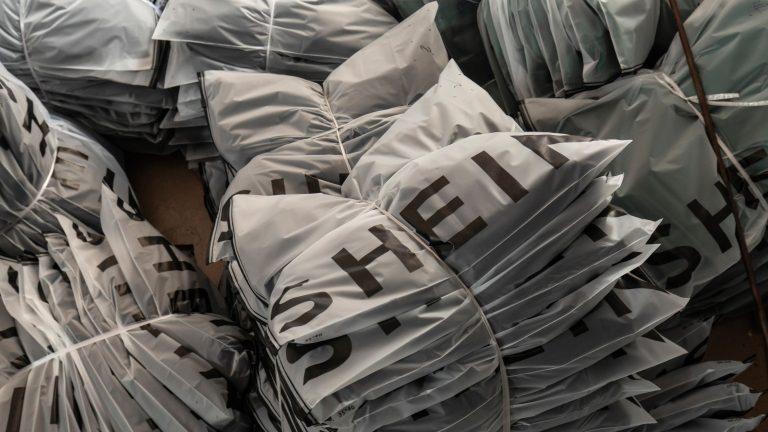Ever heard of Metersbonwe, Handu, or Ruhnn? They paved the way for Shein, but there’s a reason you don’t know them.
In fast fashion, there’s something known as the “impossible triangle.” It’s the perfect production scenario, where a company can 1) quickly onboard lots of new styles at 2) low prices, while 3) being hyper-efficient in managing massive volumes of inventory. Unlike Shein, those other upstarts didn’t quite crack the third edge of that triangle. And that’s what left them trailing — according to Crunchbase — the fourth most-valuable tech startup in the world, with an estimated $100 billion valuation.
While it’s acknowledged that Shein has upended the e-commerce industry, the company is a black box; many of the company’s key statistics, like its wild revenue levels and growth rates, are still estimates. But beyond that lies a whole trail of bread crumbs in Chinese-language sources, from financial media like Jiemian to investment banks like Zhongtai, who are the only ones on the ground to do proper due diligence. As I’ve sifted through the piled-up coverage, it turns out there’s a whole lot we do know about Shein — including details on what really makes it tick, and where the model might be hitting its limits.
The heart of the company is a flexible supply chain, something companies like Zara chased for years, and which Shein has turned into a true infrastructure capability. From 2014 to 2017 — and even onward, as it scaled — Shein invested the bulk of its funds there, a longtime supplier says, to make sure it could respond near-instantaneously to fickle demand. According to them, Shein persevered in sorting out that “dirty work,” when pretty much everyone else was focused on packaging their messier supply with clean-looking marketing and sales. In other words: its ability to deliver so many styles, so quickly, is its sales strategy.
Here’s how it works. We begin with a cluster of a few hundred key suppliers, most of whom are located in Nancun Town, Guangzhou City. That’s where Shein’s Guangzhou headquarters is. It’s estimated that half of the entire manufacturing capacity in the city’s Panyu District is eaten up by the company.
There are two main kinds of suppliers: “free on board,” those that make simple designs they haven’t devised themselves, and “original design manufacturers,” those that do both. They all feed into Shein’s sprawling manufacturing execution system (MES). The designer-suppliers will find pictures online and send a selection to Shein’s internal buyers for consideration; the buyer and their manager settle on a final pool. Once samples have been received, there might be two, or even three, rounds of changes before manufacturing can commence. (The entire time, everything needs to be recorded in the MES — materials, pricing, even chat logs — something suppliers balk at, because, if the deal falls through, all the information sits in Shein’s records, and there’s nothing to stop them from producing it elsewhere.)
This all happens extremely quickly. Samples for the initial order need to be mailed to the Shein buyer and updated within three days. The company is punitively strict with deadlines — more than five days and suppliers face the possibility of being cut; reorders will take nine days or less. (Compare that to Zara’s traditional 14-day turnaround.) Add in at least eight business days for shipping, and that means it’ll take about a month from design to arrival on a U.S. customer’s doorstep.
Shein is ruthlessly efficient when it comes to evaluating its suppliers, according to analysis by Zhongtai Securities. A scoring system sorts the wheat from the chaff. Timeliness of procurement and delivery, stocking and delivery, rate of defects, and the success rate of new products make up 40% of a supplier’s score. The remaining 60% is based on order volume. They are then tiered into five levels, and the bottom 30% of the lowest tier are culled.
Up to half of Guangzhou’s clothing suppliers may be working for Shein, but quality assurance has become more and more stringent in recent years, and some say they can’t keep up. Still, with a pool of 400,000 clothing factories in China, there’s a willing supply of manufacturers and designers to take their places; and while Zara does try to hire more-experienced designers and send them to global fashion events, Shein, on the other hand, can quickly hire Chinese vocational school grads who complete their research online, Zhongtai analysts find.
There’s a lot of buzz over whether Shein’s manufacturing is “automated.” And the answer is: it’s not. While its management software is, the actual method by which the clothes are produced is traditional human labor. This makes sense — profit margins are thin, and order volumes start small, so the bigger, higher-tech factories that are able to work with name brands aren’t fighting over Shein orders. Work mostly goes to the smaller factories; alongside its Panyu crew, Shein has smaller-scale suppliers across the country that are often just catching outsourced work. It also sources from The Thirteen Factories, a former historical site that’s now a wholesale bazaar.
Pressure is exerted throughout this entire system. Garment workers say they can sew thousands of pieces a day if it’s a simple design, or 300–400 if more complicated. Other workers who sew buttons can also do up to 300 pieces a day. Workers are paid per completed piece and typically work 10–12 hours a day, with two breaks in the middle, ending usually at 10:30 p.m. There’s only one day a week that they don’t work overtime. They do make a decent amount of money — about 8,000–10,000 yuan ($1,200–$1,500) per month — but the work is, obviously, extremely grueling.
Suppliers, too, have to gamble everything on one of their products becoming a viral hit. Suppliers can lose money on the initial order, which is now pretty much limited to 100 pieces. Quick math: say each item’s profit is 1–5 yuan, which is typical; multiply that by 100, and you may not even be able to pay for the 500 yuan it typically costs to set up a sample.
The bigger question is, where does the flexible supply chain setup hit a ceiling — and what does that imply for Shein’s massive valuation? Shein’s rare speed to market creates upwards of tens of thousands of new data points, giving the company even more market intelligence about what it should make next. Fashion, however, is one of those sectors where data can quickly expire.
One thing is certain: Shein will not be the only beneficiary of the system it’s created. Expect the next Shein to leverage these supply chain upgrades as well as social media channels like TikTok. Newcomers, however, will also have to refine their logistics and become even more efficient at acquiring and retaining customers, perhaps through better personalization algorithms — where Shein is just scratching the surface. They’ll also have to address issues of intellectual property, sustainability, and working conditions in a world where consumers are increasingly conscious of not just where their goods come from but who made them. Creating hyper-efficiency is Shein’s mark — but its followers will be dealing with the challenges that stem from that, too.



